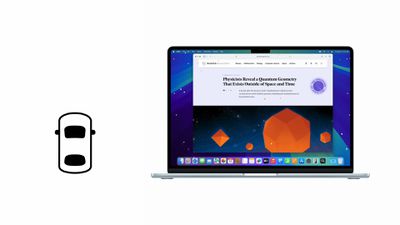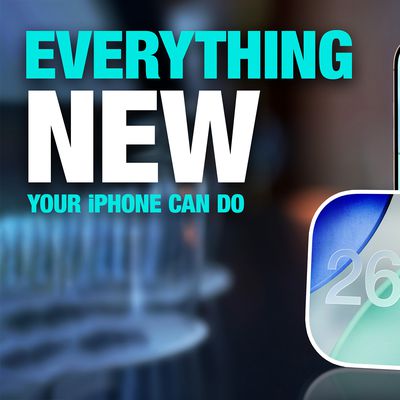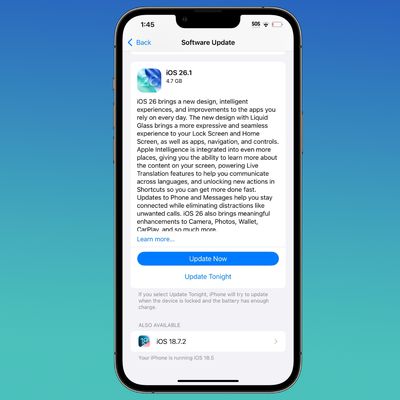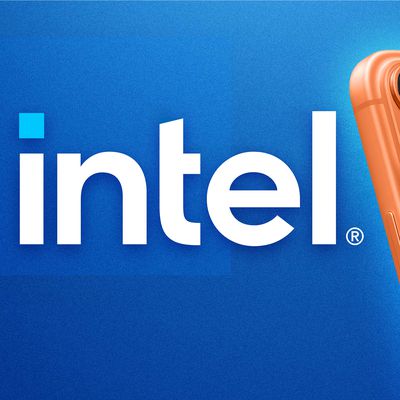The Worldwide Developers Conference (WWDC), Apple's annual developer and software-oriented event, is less than three weeks away. We haven't heard a great deal about macOS Tahoe ahead of its announcement this year, so we could be in for some major surprises when June 9 rolls around. Here's what we know so far about the next major update to Apple's Mac operating system.

macOS Tahoe
Every year heading into WWDC, one question on many Mac fans' minds is what Apple will choose as the name for the next version of macOS. The tradition dates all the way back to the beginning of Mac OS X with its big cat names, and then in 2013 Apple shifted to Calfornia-themed names with the unveiling of OS X Mavericks.
Bloomberg's Mark Gurman reports that the successor to macOS Sequoia will be called macOS Tahoe, after California's scenic Lake Tahoe. Lake Tahoe is famous for its clear, reflective waters that mirror the mountains and sky around it. According to Gurman, this ties in with the rumored design of macOS. More on that below.
macOS 16 ➝ macOS 26?
Going forward, macOS will be identified by year, rather than version number, reports Bloomberg. That means we're not getting macOS 16. Instead, we're getting macOS 26. The same goes for iOS 26, iPadOS 26, tvOS 26, watchOS 26, and visionOS 26.
Changing the name of the operating systems will introduce consistency across the lineup, rather than having several disparate numbers that don't match up. The names also reflect a new effort by Apple to provide a more unified design across operating systems on different devices.
Compatibility
![]()
Apple began transitioning the Mac lineup to Apple Silicon in 2020 and completed it by 2023. Since then, support for Intel Macs has steadily declined with each new macOS release.
Only a few Intel-based machines are supported in Apple's last update, macOS Sequoia:
- 2018 Mac mini
- 2019–2020 iMac models
- 2017 iMac Pro
- 2020 MacBook Air
- 2018–2020 MacBook Pro models
- 2019 Mac Pro
With the increasing prevalence of AI features, it could be that macOS 26 is the last version to support at least some Intel-based Macs, minus Apple Intelligence features that require Macs with Apple silicon chips. If Apple dropped support for the oldest models in the above list, that would see Apple stay faithful to delivering at least five years of software support for its devices.
Rumored Design Changes
Apple is planning a radical redesign of macOS with version 16, and it could be the most significant visual refresh since macOS Big Sur was introduced in 2020, according to Bloomberg.

The upcoming Mac operating system will reportedly be part of Apple's sweeping effort to create a more consistent interface across all of its platforms, including iPhone, iPad, and Apple Vision Pro. The redesign will update the "style of icons, menus, apps, windows, and system buttons" throughout the system.
According to people familiar with the project, which is dubbed "Cheer" internally, Apple aims to simplify navigation and device control while bringing design elements from visionOS to the Mac experience. While specific details remain limited, some of the changes could include:
- Complete refresh of icons, menus, and system buttons
- New window styles and management features
- Simplified navigation system
- Visual elements inspired by visionOS (possible circular app icons?)
- More translucent interface elements
- Greater visual consistency with iOS and iPadOS
The redesign is described as "loosely based" on the Vision Pro's software interface, while being adapted for traditional displays. Bloomberg notes that some "immersive" elements from the Vision Pro experience won't translate to the 2D world of macOS.
The design overhaul is reportedly a major focus for Apple's software engineering organization and user interface team within its design group. Alan Dye, who helped craft iOS 7's revolutionary redesign in 2013, is said to be overseeing software design for the project.
While Apple is working to make its operating systems look more consistent, the company is deliberately avoiding merging them completely. Bloomberg reports that Apple believes it can create better Macs and iPads by maintaining separate operating systems, while also encouraging consumers to purchase both types of devices.
New Features
Captive Wi-Fi Data Syncing
Apple is developing a new feature that will synchronize captive Wi-Fi portal login information across devices, according to Bloomberg. The system will allow users to enter login details for captive Wi-Fi networks – commonly found in hotels, airports, and coffee shops – just once, then automatically sync that information across their iPhone, iPad, and Mac devices.
Apple is reportedly readying the feature in time for WWDC 2025, suggesting it will likely arrive with iOS 26, iPadOS 26, and macOS 26.
Google Gemini
According to Google CEO Sundar Pichai, Google could reach a deal with Apple to add Google Gemini to the iPhone in the middle of 2025. That timing suggests the functionality could be added in iOS 26, iPadOS 26, and macOS 26. Google Gemini would be added as an alternative to ChatGPT for Siri requests.
Set Default Digital Assistant (EU Only)
Apple is planning to give users in the EU the ability to set a default voice assistant other than Siri, according to Bloomberg. Apple reportedly plans to introduce the change across multiple software platforms, so expect it to turn up on iPhone, iPad, and Mac at a minimum.
AI Battery Management?
Bloomberg reports that Apple plans to use AI to help users better manage their iPhone's battery life. In iOS 26, there will be an AI-powered battery management option that will analyze how a device is used and make adjustments where possible to cut down on battery usage. The battery option will be included in the Apple Intelligence suite of features, with Apple drawing on battery data that it has collected from users over time.
It's not clear if Apple plans to bring an equivalent AI-based battery-saving feature over to MacBooks in macOS 26, but it's hard to imagine a reason why the company would choose not to.
Possible Siri Updates

Apple has delayed some of the new Siri features originally planned for macOS 15 as part of its Apple Intelligence suite of tools. These updates may now debut with macOS 26, possibly in the fall of 2025 or even in a later macOS 26 update in 2026. Apple is working on a more intelligent and personalized Siri, capable of understanding context, interacting with onscreen content, and integrating more deeply with apps.
Personal Context
Siri will be able to track emails, messages, files, photos, and more—learning from your data to assist with tasks and recall information.
- Show me the files Eric sent me last week.
- Find the email where Eric mentioned ice skating.
- Find the books Eric recommended to me.
- Where's the recipe Eric sent me?
- What's my passport number?
Onscreen Awareness
Siri will recognize what’s on your screen and act on it. For example, if someone texts you an address, you can ask Siri to save it to their contact. Or if you’re viewing a photo, Siri can send it for you.
Deeper App Integration
Siri will handle more complex tasks across apps, enabling actions previously unavailable through voice commands.
- Move files from one app to another.
- Edit a photo and send it to someone.
- Get directions home and share the ETA with Eric.
- Send the email I drafted to Eric.
Accessibility Features
Each May, Apple shares details on the new Accessibility features that it plans to add to upcoming versions of its software. This year, Apple detailed several new Accessibility options that will be coming to macOS 26.
Vehicle Motion Cues
Apple in macOS 26 will expand the iPhone's Vehicle Motion Cues feature to the Mac. The optional feature shows moving dots on an iPhone's screen, in order to help reduce motion sickness while using the device in a moving vehicle. In addition, Apple is going to provide new ways to customize the on-screen dots on a Mac.

Magnifier on Mac
Magnifier on Mac uses the iPhone camera's zoom feature, beaming the feed to a Mac through Continuity Camera. There are options for creating multiple live session windows for tracking a presentation while also zooming in on a textbook, and each view can be customized with different brightness levels and color and contrast filters to suit individual needs. Magnifier on Mac is an extension of the existing Magnifier option on the iPhone, which allows the iPhone to be used to zoom in on text and detect objects.

Other Features
- Accessibility Nutrition Labels in the App Store, which will highlight accessibility features within apps and games.
- A new system-wide Accessibility Reader tool will make text easier to read for users with low vision or dyslexia. The feature will give users new ways to customize text and focus on content they want to read, with extensive options for font, color, and spacing.
- Braille Access will turn the Mac into a full-featured braille note taker.
- Personal Voice will become faster and easier to use, thanks to advancements in on-device machine learning and artificial intelligence. Apple says the feature will be able to create a smoother, more natural-sounding replication of your voice in less than a minute, using only 10 recorded phrases.
Release Date
Apple typically previews its next-generation operating system for Macs during its annual Worldwide Developers Conference in early June, and releases the first developer betas shortly after the event. Typically (but not always), Apple releases all of its new platform software updates in the fall, so we expect to see macOS 26 around September.

























